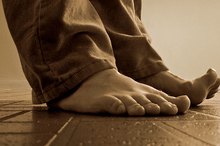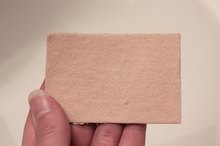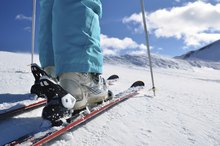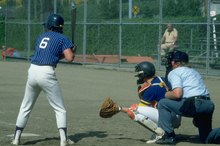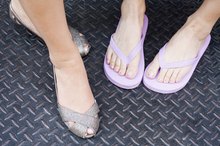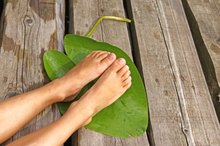Can I Cover My Sore Toes When Running?
Running places a great deal of impact on our feet. Toes act like springboards, transferring motion from the ball of the foot to propel us off the ground and absorb impact. Soreness, swelling, numbness and tingling sensations in the toes are common experiences for seasoned runners 1. Covering toes with tape, Band-Aids or gel-like pads can prevent blisters and hot spots. Socks and shoes must also fit properly; larger or smaller sizes can constrict or rub toes.
If you are experiencing serious medical symptoms, seek emergency treatment immediately.
Blisters
Friction often leads to hot spots -- warm, red patches of skin -- and blisters on your feet and toes 1. Painful and potentially debilitating, blisters demand attention as soon as you are able to give it. Continuing to run with blisters increases their size and your risk for infection. Taping or wrapping your toes in athletic bandages or moleskin can prevent chafe associated with blisters. You can wrap all toes or just those prone to blisters. If a blister has already formed, clean it properly before applying a wrap. Check the fit of your shoes and socks; too much or too little room in either can lead to chafing.
- Friction often leads to hot spots -- warm, red patches of skin -- and blisters on your feet and toes 1.
- Taping or wrapping your toes in athletic bandages or moleskin can prevent chafe associated with blisters.
Sore Toenails
Numb Toes With Running Shoes
Learn More
As you run, your toes push forward in your shoes, pressing against the front portion of the toe box, or toe area of the shoe. Endurance running increases the pressure on the fronts of your toes, often resulting in sore or discolored toenails. Black toenails are common in marathon training or whenever you increase your mileage significantly, according to Jeff Galloway, author of several running books, including "Galloway's Book on Running." Black toenails are brought about by repeated pressure, and you can prevent them by ensuring your toes have enough room in your shoe. Taping or wrapping your toes with thick tape or gel pads may give you shock-absorbing comfort; however, it may also limit the space in your shoe, exacerbating your symptoms.
- As you run, your toes push forward in your shoes, pressing against the front portion of the toe box, or toe area of the shoe.
- Taping or wrapping your toes with thick tape or gel pads may give you shock-absorbing comfort; however, it may also limit the space in your shoe, exacerbating your symptoms.
Toe Socks
In lieu of wrapping your toes every time you step outside for a run, consider investing in socks that have individual toes built in. Available in running stores and online, these socks provide a barrier in between toes to prevent inter-toe rubbing and subsequent blisters. They are also thinner than layers of tape, reducing the bulk that can contribute to pressure on the toes.
Cautions and Considerations
Why Is It Important to Wear Good Walking Shoes?
Learn More
When choosing to wrap your toes, keep in mind that your feet swell with warmth. Wrapping too tightly can restrict circulation and lead to potential injury. Keep weather in mind when selecting shoes and socks as well. Since your feet will increase in size during a run in warm weather, ensuring your socks and shoes accommodate this change is important. If a majority of your running takes place in hot climates, consider buying shoes a half-size larger to keep your toes and feet comfortable.
- When choosing to wrap your toes, keep in mind that your feet swell with warmth.
Related Articles
References
- NYDailyNews.com: Running Doc: Minimizing Friction Helps Runners Avoid Blisters on Long Training Runs
- American Academy of Dermatology. How to prevent and treat blisters.
- Hoffman MD. Etiological foundation for practical strategies to prevent exercise-related foot blisters. Curr Sports Med Rep. 2016;15(5):330-5. doi:10.1249/JSR.0000000000000297
- Caselli MA, Chen-Vitulli J. Foot blister prevention: What you can recommend to athletes. Podiatry Today. 2002;15(4):68-69.
- Mailler EA, Adams BB. The wear and tear of 26.2: dermatological injuries reported on marathon day. Br J Sports Med. 2004;38(4):498-501. doi:10.1136/bjsm.2004.011874
- Worthing RM, Percy RL, Joslin JD. Prevention of friction blisters in outdoor pursuits: A systematic review. Wilderness Environ Med. 2017;28(2):139-149. doi:10.1016/j.wem.2017.03.007
Writer Bio
Christy Callahan has been researching and writing in the integrative health care field for over five years, focusing on neuro-endocrinology. She has a Bachelor of Science degree in biology, earned credits toward a licensure in traditional Chinese medicine and is a certified Pilates and sport yoga instructor.

